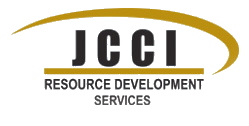NSF Campus Cyberinfrastructure (CC*)
Campus Cyberinfrastructure (CC*)
PROGRAM SOLICITATION NSF 19-533
Application Deadline: February 20, 2019
Summary
The Campus Cyberinfrastructure (CC*) program supports “coordinated campus-level networking and cyberinfrastructure improvements, innovation, integration, and engineering for science applications and distributed research projects. Learning and workforce development (LWD) in cyberinfrastructure is explicitly addressed in the program.” As with all NSF grants, projects must be focused on science-related improvements and initiatives.
The NSF program solicitation outlines a few notable changes to the CC program compared to previous years:
- NSF has renamed and made some changes to what was previously known as the Network Design and Implementation for Small Institutions program area. The new program name is the Regional Connectivity for Small Institutions of Higher Education program area.
- NSF has added two new program areas: Campus Computing and the Computing Continuum and Cyber Team-Research and Education CI-based Regional Facilitation.
- The former Network Performance Engineering and Outreach program area is no longer a funded program area.
NSF anticipates awarding between $10 million and $17 million across five program areas:
- Data-Driven Networking Infrastructure for the Campus and Researcher awards (5-10 awards anticipated) will be up to $500,000 for a period of up to 2 years;
- Regional Connectivity for Small Institutions of Higher Education awards (3-5 awards anticipated) will be up to $800,000 for a period of up to 2 years;
- Network Integration and Applied Innovation awards (2-5 awards anticipated) will be up to $1,000,000 for a period of up to 2 years;
- Campus Computing and the Computing Continuum awards (5-15 awards anticipated) will be up to $400,000 for a period of up to 2 years, with some exceptions limiting the award total to $100,000; and
- Cyber Team–Research and Education CI-based Regional Facilitation awards (3-5 awards anticipated) will be up to $1,400,000 for a period of up to 3 years.
Program-wide Criteria
All NSF-supported projects are to be science-driven, which includes research and education functions. Successful proposals will demonstrate the project’s science-enabled research and/or educational foundation.
NSF views partnerships as a critical component of successful projects. Projects must show collaborative partnerships among campus-level CI experts (including campus Information Technology (IT)/networking/data organization), contributing domain scientists, research groups, and educators. These partnerships will support the ability for stakeholders to engage in and drive new networking capabilities and approaches in support of scientific discovery. NSF will evaluate proposals on the strength of these institutional partnerships since these partnerships are expected to play a central role in developing and implementing the eventual network and data infrastructure upgrades.
Proposals must include a Campus Cyberinfrastructure (CI) plan that describes the need for CI improvements and proposed design and implementation that fits within a comprehensive campus-wide strategy and approach to CI that involves horizontal integration on campus and vertical integration with regional and national CI investments and best practices. The Campus CI plan is limited to five pages and should address the following topics:
- Sustainability of proposed work/ongoing operational and engineering costs
- Campus-wide approach to cybersecurity including data and privacy issues as well as scientific research and educational infrastructure
- Campus status and plans with respect to federated identity and specifically InCommon, including: if the campus is registered with InCommon as supporting the Research and Scholarship (R&S) Entity Category to streamline integration with research applications; and if the campus meets the InCommon Baseline Expectations for Trust in Federation
- The plan should also describe campus IPv6 deployment.
NSF provides examples of CI plans from funded proposals.
Campus Computing and the Computing Continuum
This program area appears to be the most promising one for smaller institutions. In fact, NSF says that it “encourages proposals in this program area from under-resourced institutions and preference will be given to proposals demonstrating a compelling need for access to campus/cloud resources, including institutions lacking necessary computing and storage resources on campus.”
Proposals must address campus-wide computing needs, and NSF will not consider any proposal that focuses on a single science domain or project use.
All proposals for this program area must address the following items:
- Scientific and engineering projects and their research computing needs, describing project-specific scenarios for scientific computing tied to the proposed computing resources;
- Features, capabilities, and software platforms representing the proposed computing resources; and
- Scientific computing codes expected to run on the resources.
Proposals must also include expected outcomes and make a compelling case for proposed computing resources by describing the current state of available computing resources and the expected benefits of the proposed resources to the identified science drivers and applications.
NSF will consider proposals that target one of these three options as described in the program solicitation:
- Campus Cluster Resource (Requests of up to $400,000)
Campus Cluster Resource proposals request funding for the acquisition of a shared, high-performance, network-connected computing resource available to scientific computing users on campus and outside of campus.
Project Descriptions for these proposals must include:
- A summary table of the science drivers and their computing environments—these requirements may be specified in terms of compute job profile parameter ranges, core count ranges per job, times to completion or as part of a composition or scientific workflow profile;
- The platform architecture specifying cluster components, including compute node type and count, per-node memory, interconnect fabric, storage, and open source software/platform;
- An open source-based approach to cluster monitoring, measurement, management, and instrumentation;
- A sustainability plan addressing the institution’s commitment to providing an ongoing level of sustained access to computational resources;
- A High-Performance Network Connectivity and Specification—(described below); and
- A description of the cluster as a Shared Resource Intra-campus and Inter-campus—(details below).
NSF encourages consideration of open source virtualization technologies for these proposals.
Itemized vendor quotes accompanying the budget are required for all proposals in this program area.
High-Performance Network Connectivity and Specification:
Proposals should describe the network connectivity of the proposed computing resource, both intra-campus and inter-campus. Proposals should include plans for the deployment of a PerfSonar-based network performance measurement capability to initially measure achievable end-to-end network performance for scientific data flows between the resource and relevant end points of researchers.
The Cluster as a Shared Resource Intra-campus and Inter-campus:
Proposals should describe (1) their approach to sharing the proposed computing resource across the science drivers and researchers at their institution; (2) how the resource will be accessed by external research groups; and (3) how the resource is coordinated with external resources allowing the institution’s researchers to seamlessly access computing resources at other campuses,
regional and national computing resources, and/or production cloud resources, if appropriate.
Proposals should commit to a minimum of 20% shared time on the cluster and describe their approach to making the cluster available as a shared resource external to the campus, with access and authorization according to local administrative policy. Conversely, the proposal should describe the approach to providing on-demand access to additional external computing resources to its targeted on-campus users and projects. One possible approach to
implementing such a federated distributed computing solution is joining the Open Science Grid. Whatever opportunistic, federated, scalable, distributed computing platform is chosen, the proposal is expected to justify the choice by including a discussion on the shared platform’s track record in the community, its current scientific computing production capability, and its scaling properties. Applicants are encouraged to include a letter of collaboration from the selected platform.
The proposal is expected to document campus IT and research leadership commitment to operations and maintenance (O&M) given that the proposal budget is expected to be dominated by equipment, with some travel and project coordination staff time. Costs associated with software license fees are not allowed.
- Cloud Computing Resources (Requests of up to $100,000 in the NSF budget and up to $100,000 in cloud credits/resources in the supplementary document)
Cloud Computing Resource proposals include a technical justification for use of cloud resources coupled with the cost computation used to arrive at the requested amount of credits/resources as well as the detailed annual plan for usage of these credits/resources over the duration of the project. Amazon Web Service and Google Cloud Platform are participating in the CC* program to provide cloud credits/resources to campuses whose scientific research requires additional and external computational and storage resources. These providers are also expected to provide support and training to those campuses. If additional cloud providers join the program, resources/credits from those providers will be available under the same terms and conditions as described in this solicitation, and will be added to the NSF CC* program webpage.
While the technical description and justification for use of cloud resources are expected to be part of the Project Description, details of the cloud resource costing and annual cloud resource usage should be included in the Supplementary Documents section of the proposal. Note that cloud providers participating in this program have explicitly waived ingress data charges and most educational and non-profit institutions are eligible for waiver of egress data charges.
Applicants must include a plan addressing the institution’s commitment to providing an ongoing level of sustained access to computational resources.
- Hybrid (Requests of up to $400,000 in the NSF budget and up to $100,000 in the supplementary document)
Hybrid proposals describe an approach that uses both Campus Cluster Resource and Cloud Computing Resources. For proposals using a hybrid approach, follow the guidance included in the Campus Cluster Resource category for the justification and specification of a shared
local compute cluster.
The Project Description must include the following items:
- A summary table of the science drivers and their computing environments – these requirements may be specified in terms of compute job profile parameter ranges, core count ranges per job, times to completion or as part of a composition or scientific workflow profiles;
- The platform architecture specifying cluster components, including compute node type and count, per-node memory, interconnect fabric, storage, and open source software/platform;
- An open source-based approach to cluster monitoring, measurement, management, and instrumentation;
- A sustainability plan addressing the institution’s commitment to providing an ongoing level of sustained access to computational resources;
- A High-Performance Network Connectivity and Specification (details below) and;
- A description of the cluster as a Shared Resource Intra-campus and Inter-campus (details below).
NSF encourages proponents to consider open source virtualization technologies.
Proposals must include itemized vendor quotes.
High-Performance Network Connectivity and Specification:
Proposals should describe the network connectivity of the proposed computing resource, both intra-campus [for example, the campus network path(s) connecting the resource with the
researchers and driving science applications on campus], and inter-campus (for example, showing the network path connecting with the regional exchange point or Internet2). Proposals should include in their plans the deployment of a PerfSonar-based network performance measurement capability to initially measure achievable end-to-end network performance for scientific data flows between the resource and relevant end points of researchers.
The Cluster as a Shared Resource Intra-campus and Inter-campus:
Proposals should describe (1) their approach to sharing the proposed computing resource across the science drivers and researchers at their institution; (2) how the resource will be accessed by external research groups; and (3) how the resource is coordinated with external resources allowing the institution’s researchers to seamlessly access computing resources at other campuses, regional and national computing resources, and/or production cloud resources, if appropriate.
Proposals should commit to a minimum of 20% shared time on the cluster and describe their approach to making the cluster available as a shared resource external to the campus, with access and authorization according to local administrative policy. Conversely, the proposal should describe the approach to providing on-demand access to additional external computing resources to its targeted on-campus users and projects. One possible approach to implementing such a federated distributed computing solution is joining the Open Science Grid. Whatever opportunistic, federated, scalable, distributed computing platform is chosen, the proposal is expected to justify the choice by including a discussion on the shared platform’s track record in the community, its current scientific computing production capability, and its scaling properties. Proponents are encouraged to include a letter of collaboration from the selected platform.
The proposal is expected to document campus IT and research leadership commitment to O&M given that the proposal budget is expected to be dominated by equipment, with some travel and project coordination staff time. Costs associated with software license fees are not allowed.
This area supports the campus integration of commercial cloud computing and storage resources while challenging institutions to define a multi-layer resource strategy in meeting the needs of their scientific communities. Proposals are expected to address their approach to using cloud resources in combination with campus resources as well as the national shared distributed computing fabric chosen. Amazon Web Service and Google Cloud Platform are participating in the program to provide cloud credits/resources, as well as support and training, to campuses whose scientific research requires additional and external computational and storage resources, for example, to provide on-demand bursting capability during peak aggregate demand times. If additional cloud providers join the program, resources/credits from those providers will be available under the same terms and conditions as described in this solicitation, and will be added to the CC* Program Page.
While the technical description and justification for use of cloud resources are expected to be part of the Project Description, details of the cloud resource costing and annual cloud resource usage should be included in the Supplementary Documents section of the proposal. Note that cloud providers participating in this program have explicitly waived egress data charges. The request for cloud credits/resources must adhere to a maximum of $100,000 and cannot exceed 50% of the overall proposed budget. The proposal is expected to document campus IT and research leadership commitment to O&M given that the proposal budget is expected to be dominated by equipment, with some travel and project coordination staff time.


